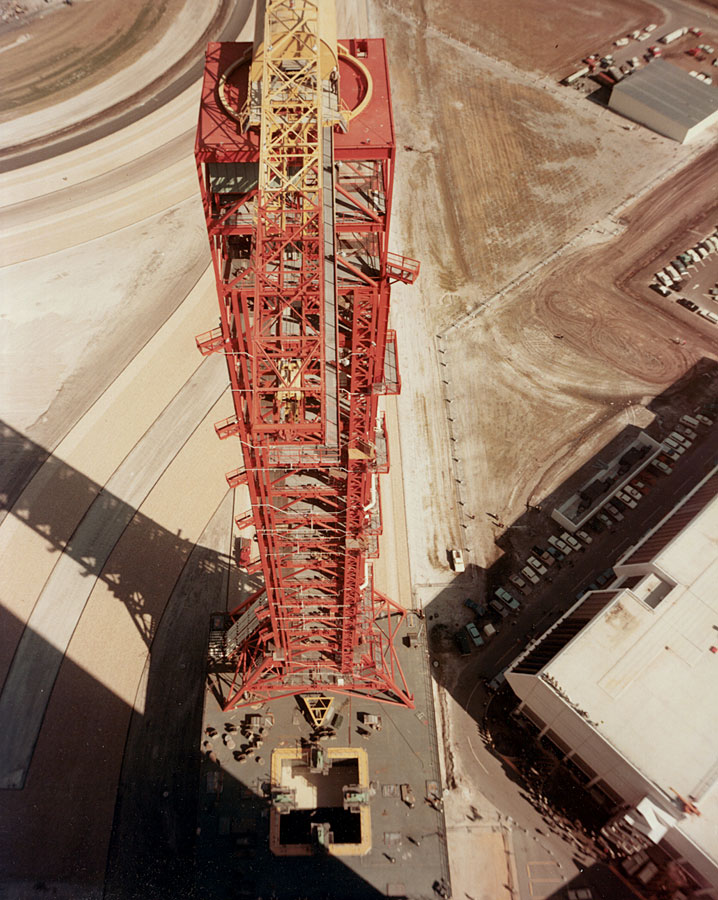Introduction
- Mischa
- LUT model
Hereby I officially open the construction blog for the second part of the moon landing trilogy - the Launcher Umbilical Tower, or LUT for short.
After the Crawler Transporter 1/96 saw the light of day after ... em ... a few months of construction and building time, and already has here, as well as at several other locations on this earth, fallen under the knife of courageous model makers, Perry Becker, Chief of the crawler crews, is still looking for volunteers to assemble the paper crawler for the Visitor-Complex at the KSC.
'LUT' is pronounced 'LAT' in NASA English, which surprised me a bit, because 'Umbilical' sounds more like 'jumbilikl' than 'ambilikl'.
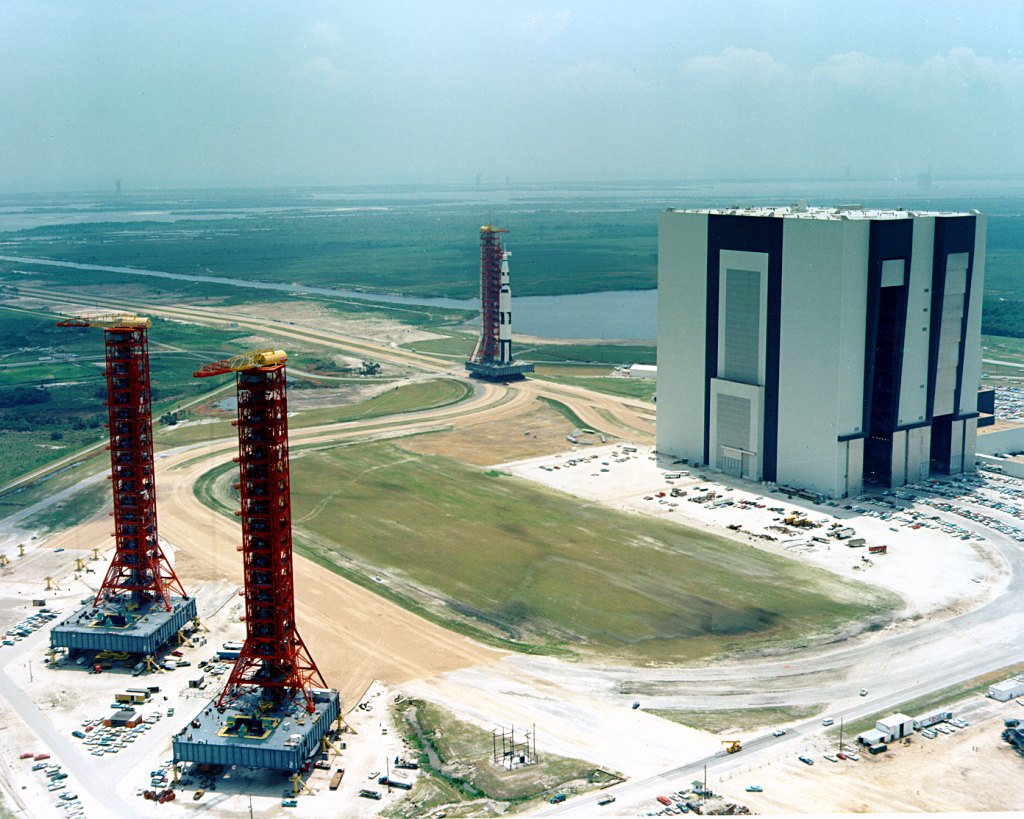
The three LUTs at KSC around 1967. Courtesy of NASA.
A total of three LUTs were built. At the end of the Apollo program they were adapted for the space shuttle. The tower part was dismantled, and the platform was now used as MLP (Mobile Launcher Platform), while the actual launcher tower for the shuttle was erected directly at the launch pads 39a and 39b. The remains of LUT 1 (from which Apollo 11 was launched) were stored in the so-called boneyard at the KSC site for a long time and open to the public. Unfortunately, they were finally scraped in 2004 for environmental reasons, as the used paint contained lead and apparently posed a threat to the groundwater. A rescue campaign 'Save the LUT', in which I also took part, unfortunately could not help any more. A piece of human history is finally gone.
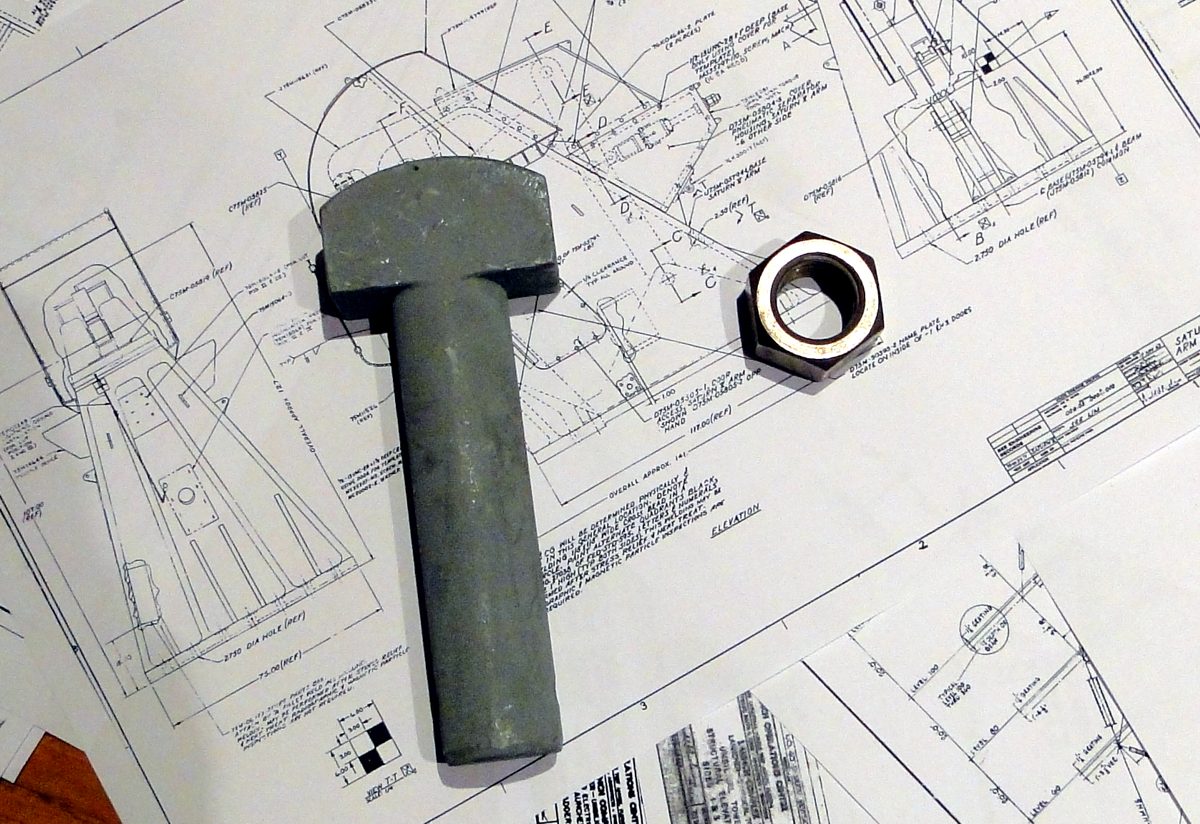
A nut from Level 380.
So what you see here is a kind of relic that I got during my visit to NASA - the nut on the right is from level 380 of LUT #1. I will keep it in honour. Next to it you can see a locking bolt for the chain links of the crawler, a personal gift from NASA ;)
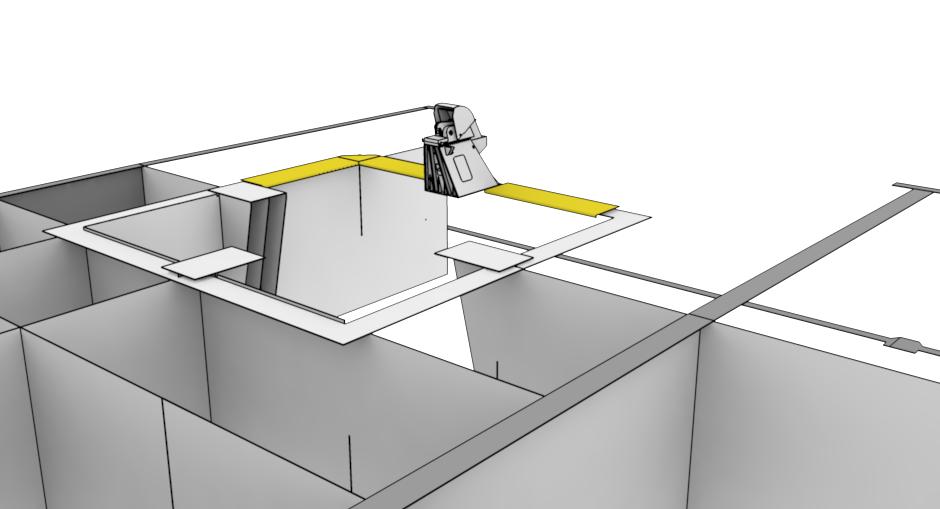
Design of the MLP
The construction starts with the MLP for obvious reasons. As explained above, the term 'MLP' stems from the space shuttle era, where the launcher tower and launcher platform were separated. During the Apollo era it had no specific name, however it's handy to refer to it somehow..
We already see here one of the four Hold-Down-Arms, those powerful clamps, which tied the Saturn V merciless to the ground, in order to release it synchronized in one moment, once the five F1-engines have reached their full power.
I don't want to imagine what would have happened, if one of the release mechanisms had ever failed.
Courtesy of NASA.
This slow motion clip is raw from Camera E-8 on the launch umbilical tower/mobile launch of Apollo 11, July 16, 1969. The camera is running at 500 fps, making the total clip of over 8 minutes represent just 30 seconds of actual time.
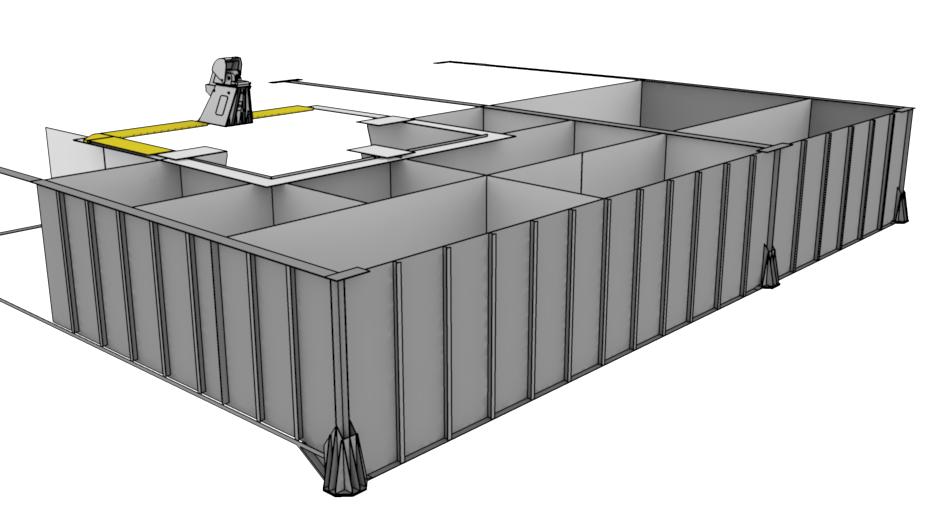
Design of the MLP
Now the box of MLP is by no means as trivial as it seems at first glance, and I don't mean the castigated inner life. Each of the ground column interfaces is different, and the differences are very subtle.
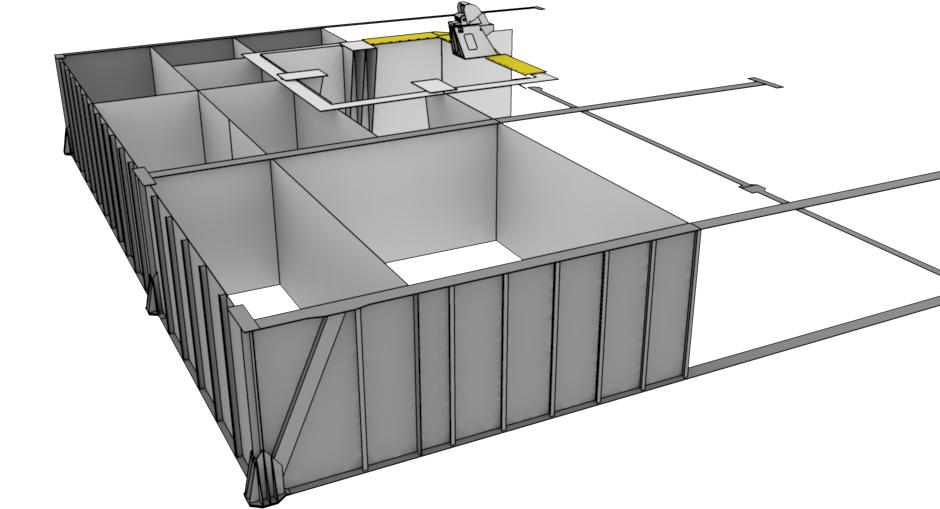
Design of the MLP
The main problem, however, is that your constructor has basically got himself into a delusion of detail. The deck of the MLP ramps down on both sides like a roof, probably to avoid puddles. The difference in height is about 6 inches - big enough to fall within my self-chosen limit of 1 inch accuracy (6 inches on the model are 1.5 mm). On the other hand, the angle of the lower steel beams of the tower would not have fit exactly anymore - so I had no other choice. So much for the emergence of the LUT. I hope this blog won't last another 10 years *ggg*


